Star Trek: Enterprise – “In a Mirror, Darkly, Part 2” (season 4, episode 19)
Teleplay by Michael Sussman; story by Manny Coto; directed by Marvin V. Rush; first aired in 2005
In the aftermath of “In a Mirror, Darkly, Part 1”, the ISS Enterprise is all blown up, but Mirror Archer and his crew have found themselves a new ship: the USS Defiant, a Constitution-class starship which disappeared – or will disappear, I guess – from the Prime Universe a hundred years in the future, as seen in the original Star Trek episode, “The Tholian Web”. This is only the first in a series of blatant fan-service Easter eggs, as Mirror Archer dons a very Kirk-like Federation uniform, fights a Gorn, and drinks something that is … green. Increasingly paranoid, increasingly xenophobic, and increasingly haunted by visions which come out of nowhere and are never explained, Mirror Archer plans to use his newly-acquired futuristic ship to overthrow the Emperor and take control of the Terran Empire … assuming someone doesn’t poison his green drink first.
VS.
Star Trek: Discovery – “What’s Past is Prologue” (season 1, episode 13)
Written by Ted Sullivan; directed by Olatunde Osunsanmi; first aired in 2018
The jig is up aboard the ISS Charon, as Mirror Lorca – or just Lorca, as we were calling him until last episode – breaks his supporters out of their agony booths and continues his coup to overthrow Emperor Georgiou and “make the Empire glorious again”. In between cool phaser fights, and political references almost as subtle as phaser fights, the crew of the USS Discovery deals with the news that their captain manipulated and betrayed them … but at least their acting captain, Saru, gives one hell of a pep talk. And it’s a good thing that he does, since it’s fallen to them to literally save the multiverse from the Terrans’ environmentally irresponsible use of the same mycelial network that powers Discovery’s spore drive. With the fate of pretty much everything apparently at stake, Michael Burnham forges a less-temporary-than-expected alliance with Emperor Georgiou to stop Lorca, destroy the Charon’s dangerous energy core, and return home … more or less.

As we come to the end of our time in the Mirror Universe – for now, at least – it’s worth looking back at the role the MU has played throughout Trek. Given how popular it would become, and how lasting a mark it would leave on pop culture, it’s easy to forget that the Mirror Universe’s first appearance, on the original Star Trek, was really just a one-off sci-fi what-if in an entire series of one-off sci-fi what-ifs, and that it wasn’t followed up on for the rest of the original series, or during the entire seven-year run of The Next Generation. The concept, costumes, and character possibilities clearly resonated with fans, and were featured in ancillary works like Diane Duane’s 1994 novel Dark Mirror, to name just one (along with a whole lot of fan fiction, I’d assume). But on TV, the writers of TNG would never revisit the Mirror Universe, and I can’t help but wonder – given the MU’s popularity, and the fact that “Yesterday’s Enterprise” does explore a somewhat similar premise – if this was by choice, or if it was instead a result of Gene Roddenberry’s famous/infamous decree that TNG depict the Federation as a conflict-free utopia.

But of course, there’s another reason why a series of Trek might leave the Mirror Universe alone entirely, as both TNG and Voyager did: it might not have anything to actually say about it. As fans, we certainly know what we like, but we’re not always conscious of why we like it, and as a result, we can sometimes get so focused on the surface-level coolness of a thing that we forget that part of what we like is what’s beneath the surface. I don’t mean to downplay or diminish the genuine joy people take from those surface details, whether it’s cosplaying in Mirror costumes, or creating fan fiction or fan art of Mirror characters. But I do suspect that at least part of the connection people might feel to the aesthetics of the Mirror Universe actually comes from the message of “Mirror, Mirror”: that the darkness of the MU is fun, and not just horrifying, precisely because Trek has shown us a much brighter possible future for humanity, one that the MU highlights by standing in such stark contrast to it. For better or for worse, TNG found other ways to do similar work; “Yesterday’s Enterprise” uses a less extreme, but still decidedly dark, war-torn alternate reality to remind us that our actions and choices could land us in that universe just as easily as they could land us in the universe of Prime Trek, and I think it makes that point at least as effectively as a genocidal Picard, or a sadistic Troi, or a Data with no ethical subroutines would have (as much fun as those alternate characters might have been to watch).

Maybe ironically, it was on Deep Space Nine, by far the darkest Trek series to date at the time it premiered, where the Mirror Universe not only returned (and returned, and returned), but also became almost entirely a fun departure from business as usual. With the Terran Empire gone from the MU, DS9’s Mirror episodes no longer showed us a warning of what could await us in the future if we don’t end up getting our act together and forming something like the Federation (an institution DS9 portrayed as markedly less utopian than either TOS or TNG ever had, anyway). Instead, the Mirror Universe became just another reality where stuff happened differently, and where familiar characters behaved in unfamiliar ways. Both “Through the Looking Glass” and “Shattered Mirror” consistently demonstrated an unwillingness to really follow through on any deeper questions posed by the introduction of Mirror characters, even when the inclusion of certain characters – like the Mirror version of Jennifer Sisko, Commander Sisko’s late wife – would seem to make those questions impossible to ignore.

When Enterprise also revisited the Mirror Universe, it would once again focus on the Terran Empire, and portray the Mirror Universe as not just any alternate reality, but as a very specific dark reflection of the Prime Trek universe. “In a Mirror, Darkly, Part 1” is notable for its strict attention to detail and its commitment to immersing us in the Mirror Universe as a place with its own history (as is made immediately clear by the brilliant alternate opening credits, which carry over to Part 2). But by focusing entirely on its Mirror characters, who never interact with anyone from the Prime universe, “In a Mirror, Darkly, Part 1” doesn’t stray from the surface-level fun of DS9’s Mirror episodes, but instead doubles down on it. It delights in the specific aesthetics of the MU in a way that DS9 didn’t, but it doesn’t go any deeper into what the MU means than DS9 ever did.
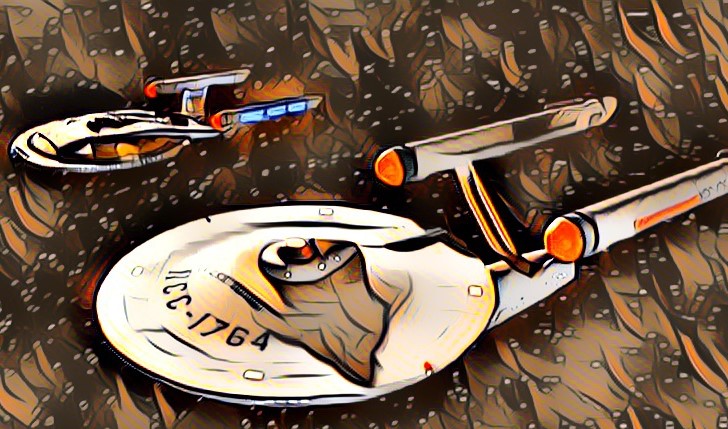
And “In a Mirror, Darkly, Part 2” just keeps doubling down on that approach. Here, we get a painstaking recreation not just of the Mirror Universe, but of the original Star Trek altogether. The Prime Universe Constitution-class ship on which Mirror Archer and company spend most of the episode is the USS Defiant in name only: both from a production standpoint and in the eyes of any viewer familiar with the original series, the Defiant is an obvious, deliberate reconstruction of the USS Enterprise NCC-1701. The ship’s exterior, the sets that make up its interior, and the uniforms that the Mirror crew conveniently end up in are all careful, lovingly constructed replicas of the models, sets, and uniforms from the original series. And beyond the look of the episode, there are fan-pleasing Easter eggs throughout the episode, some of which work – like the distinctive green liquor which turns out to be Mirror Archer’s downfall – and some of which don’t. Mirror Archer’s Gorn-fight falls, hard, into the second category: not only is it completely unnecessary to the main plot, but the CGI is embarrassingly bad, making it look like Archer is rolling around on the ground with the rejected model of a velociraptor from early in the production of Jurassic Park. The badly-executed Gorn effects fail, in part, because the non-CGI elements of the episode – its sets and costumes – are executed so well. The episode recreates the low-tech look of the original Star Trek so completely that the Gorn might seriously have looked better if they’d just stuck with the rubber lizard mask from “Arena”.
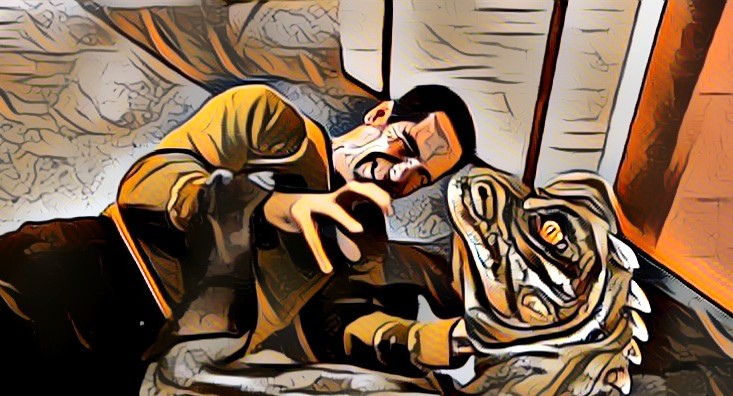
But the Gorn also illustrates my biggest issue with “In a Mirror, Darkly, Part 2”: as many fan-pleasing references and in-jokes as the episode packs in, it never manages to tell much of a coherent story. Stuff happens, sure, but at best that stuff is meaningless fun; at worst, it’s hard to even follow what’s happening, or why. Aside from the Gorn sub-plot, the most glaring example of this is Archer’s … hallucinations? Inner monologue? It’s never really made clear why he’s being taunted and berated by visions of himself. Is it a manifestation of mental illness? A metaphorical representation of his anxiety at not living up to the legacy of the Prime Archer he read about in the Defiant’s logs? The latter interpretation, in particular, carries some really interesting connotations, given Prime Archer’s tendency to whine about being ‘held back’ by the Vulcans; the idea that he’d actually feel less successful in a universe where the Vulcans were subjugated by Terrans – and that he’d still resent the Vulcans in that universe – is kind of fascinating, in today’s political climate especially. But those ideas are never really explored, and don’t matter to the story that’s being told here, at any rate; they have nothing to do with his downfall, which is just your standard Terran career advancement by assassination, on Mirror Sato’s part (and which, like Archer’s visions, pretty much comes out of nowhere).

Ultimately, “In a Mirror, Darkly, Part 2” feels like it’s been cobbled together from all the left-over ideas on the whiteboard in the Enterprise writers’ room, ideas which might have become episodes in their own right if the series hadn’t been cancelled. It’s worth noting, here, that DS9’s Mirror episodes, like this one, tended to come towards the end of their respective seasons, at a time when both the writers and the actors might simply want to blow off a little steam. Add to that the fact that “In a Mirror, Darkly, Part 2” was the fourth-last episode of Enterprise’s final season – and that the series was being cancelled, not ending on its own terms as TNG, DS9, and Voyager had all gotten to do – and it’s understandable that the writers might throw the proverbial kitchen sink into this alternate-reality episode, and that everyone involved might treat it as one of their last chances to simply have some fun at their jobs before looking for new ones. Absolutely, that’s understandable. But the end result is not so different, really, from most of DS9’s Mirror episodes; it has fun exploring the Mirror Universe without particularly having anything to say about the Mirror Universe, or about its relationship to the Prime Universe.

Discovery, as we’ve seen throughout the Mirror Universe arc late in its first season, has taken a substantially different approach to the MU. We might say it has returned, in some ways, to the approach the original series took in “Mirror, Mirror”, in that Discovery explicitly contrasts the Mirror Universe with its Prime Universe, and, importantly uses that contrast to say something about the Prime Universe; much like “Mirror, Mirror”, Discovery’s Mirror episodes are, in many ways, archetypal Trek, not a fun departure from it. But Discovery also does something new with the Mirror Universe. Since it’s a much more serialized show than even DS9 – which was already more serialized than any other Trek series – Discovery is able to not only set an extended arc of four episodes in the Mirror Universe, but to tie that arc to other ongoing storylines, as well. It’s no coincidence, I think, that aside from the Federation-Klingon war, almost every ongoing storyline in Discovery’s first season reaches its climax during the Mirror Universe arc: the big reveals for the season’s two big ‘mysteries’ both take place in the Mirror Universe, of course, as we learn what Tyler and Lorca’s deals are; but several subtler, more internal storylines reach a crucial turning point in the Mirror Universe as well, as the season’s character arcs for not just Specialist Burnham, but for Cadet Tilly and Acting Captain Saru as well, all hit their high point in the Mirror Universe, in ways that will greatly affect their actions in the season’s last two episodes, after they’ve left the Mirror Universe. All of which is to say that, unlike DS9 and Enterprise, Discovery definitely has things to say about the Mirror Universe … or rather, it has things to say about the Prime Universe through the Mirror Universe.
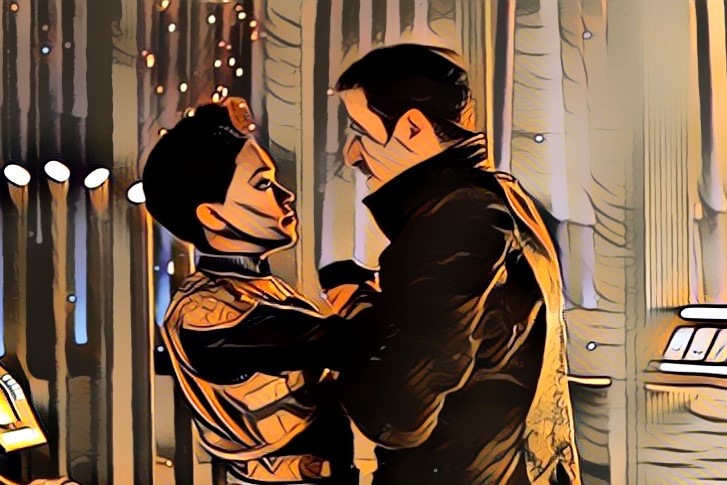
And much of what it has to say, as reiterated in “What’s Past is Prologue”, is to warn us against the dangers of letting ourselves be driven by fear. This warning was stated explicitly by Burnham in the first of Discovery’s Mirror episodes, “Despite Yourself”, in which she contrasts the “painted rust” of Terran strength, born of “constant fear”, with genuine Federation strength that comes from “an entire crew that believes in you”. That focus on fear has colored much of what’s happened in the Mirror Universe since that episode, as in “Vaulting Ambition” when Emperor Georgiou, despite her love for her own Burnham, can’t help but assume that Burnham is conspiring with Lorca against her; as Burnham said in “Despite Yourself”, the Emperor is “always looking for the next knife aimed at [her] back,” no matter what is costs her. Now, in “What’s Past is Prologue”, we see how Lorca uses fear to manipulate his followers – including the Mirror version of Rekha Sharma’s Commander Landry, whom it’s good to see again, evil or not – into fighting in his coup against Georgiou. He calls the current Emperor weak, and appeals to the Terrans’ xenophobia by implying that her weakness leaves the Empire vulnerable to alien attack (despite the fact that, so far as we’ve seen, the Terrans have already subjugated pretty much every alien species in range of their Empire).
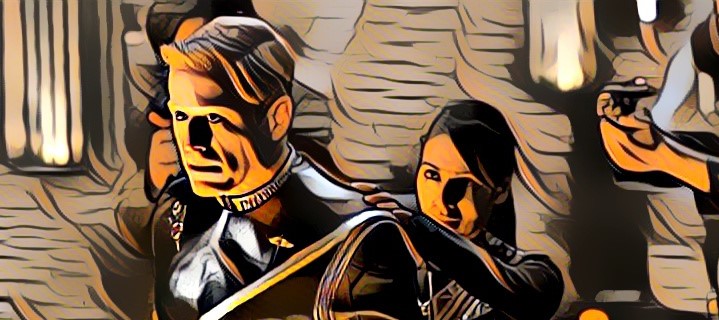
In real-world politics, we tend to equate xenophobia with hate, and it can be easy to forget what the ‘phobia’ part really means: what might manifest itself outwardly as hate often starts as fear – fear that the things you value will be taken by others who value them, or destroyed by others who don’t – and that fear is easier to admit to when it’s deflected toward an unknown ‘other’ and away from the real threats closer to home. From our perspective as viewers, the Terrans clearly have more to fear from each other than they do from any alien species; the alien rebels we’ve seen were a small force, and were largely eradicated by the very Emperor whom Lorca calls weak, while we’ve watched the Terrans constantly betraying, torturing, and murdering each other (not to mention their reckless and self-destructive exploitation of the mycelial network). The Terrans’ fear would be much more productive and sensible if it were directed at Lorca, who’s shown himself, in this episode and in “Vaulting Ambition” before it, to be a predatory megalomaniac who sees most people as pawns, to be used and discarded as necessary. But Lorca expertly redirects that fear away from himself, and uses it as a tool to get what he wants.
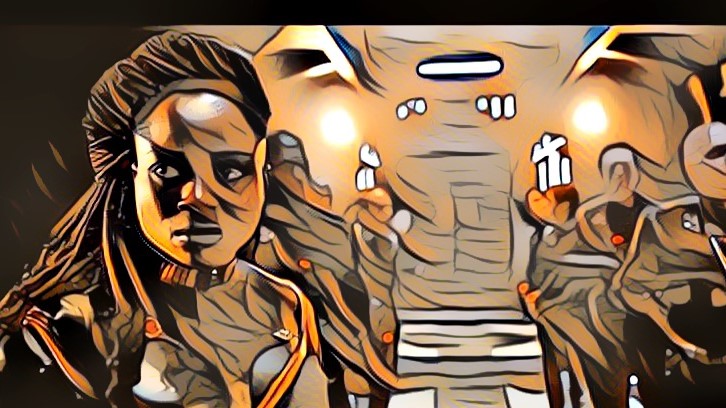
If anything, “What’s Past is Prologue” probably says what it has to say too clearly; Lorca inviting his followers to help him “make the Empire glorious again” is about as subtle as the sword that later impales him. Don’t get me wrong – it’s been said many times before, but Trek has always been political. I mean, I’d argue that everything is political, but Trek has always been explicitly political: it has always gone out of its way to remind us that all life has value, no matter how different it might seem from ourselves; and it has warned us before against denying that value, and the rights that come with it, out of fear or discomfort or paranoia. What’s more, I want my Trek to be explicitly political; I want my Trek to take a position on the current political climate, to state that some things simply are not okay, no matter how many people might think they are. But I think the episode does that better when it’s being at least a little more subtle than straight-up paraphrasing the current American president. Other lines from Lorca do a better job of this, I think: “I was just thinking about everyone who’s ever said that victory felt empty when it was attained, and what a bunch of idiots they were” is a clever critique of political rhetoric that frames ‘winning’ as a virtue, regardless of what’s being ‘won’; and “Every species, every choice, every opinion is not equal, no matter how much they want it to be” is, I think, an indictment of the way ‘political correctness’ is used as a convenient boogeyman, a way of redirecting fear towards those who assert their own rights, and away from those who would deny the rights of others for their own gain (including the rights of those who support them, if it comes to that).
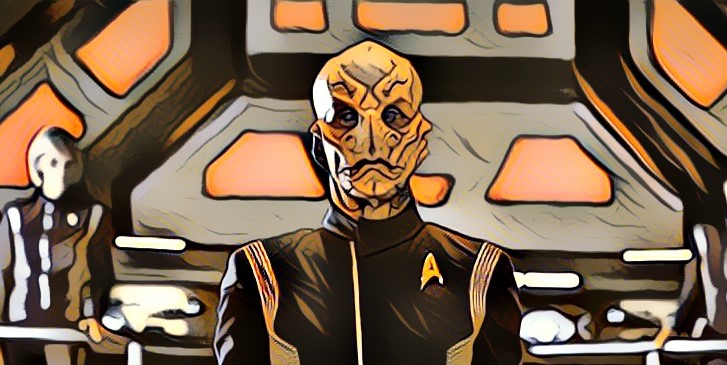
But for the most effective illustration of this episode’s, and this season’s, warning against being driven by fear, I think we can look at Saru’s speech to the crew of the Discovery, shortly after they’ve learned of Lorca’s betrayal. Saru is a character who has been largely defined, throughout much of the season, by his relationship to fear. One of the first things we learned about him was that his species was apparently bred to feel fear, to “sense the coming of death”. In the episode “Si Vis Pacem, Para Bellum”, he found peace from fear and anxiety due to the unique properties of the planet Pahvo, and the prospect of losing that peace turned him into a truly frightening threat to the other members of his away team. We were even gruesomely reminded that he has an organ devoted entirely to the sensing of danger in “Vaulting Ambition”, when Emperor Georgiou offered some poor Kelpien’s threat-ganglia to Burnham as a delicacy. And so it is undeniably significant that Saru, of all Discovery’s main characters, should give this particular speech:
“It is well known that my species has the ability to sense the coming of death. I do not sense it today. I may not have all the answers; however, I do know that I am surrounded by a team I trust. The finest a captain could ever hope to command. Lorca abused our idealism. But make no mistake, Discovery is no longer Lorca’s. She is ours, and today will be her maiden voyage. We have a duty to perform, and we will not accept a no-win scenario.”
It would have been easy for Saru, of all people – someone who was literally bred to base his actions on fear – to appeal to his crew’s very understandable fear to motivate them, to get them to do what he wants them to do, as Lorca would. Instead, he echoes what Burnham said to Tilly in “Despite Yourself”, making the case to his crew – and, I think, to us – that strength comes from trust and cooperation and idealism, and from refusing to sacrifice those things in the face of fear. Again, that’s not a new argument coming from Trek, but it is an especially powerful argument when it comes from Saru … and one that’s as important now, in the real world, as it’s ever been.
